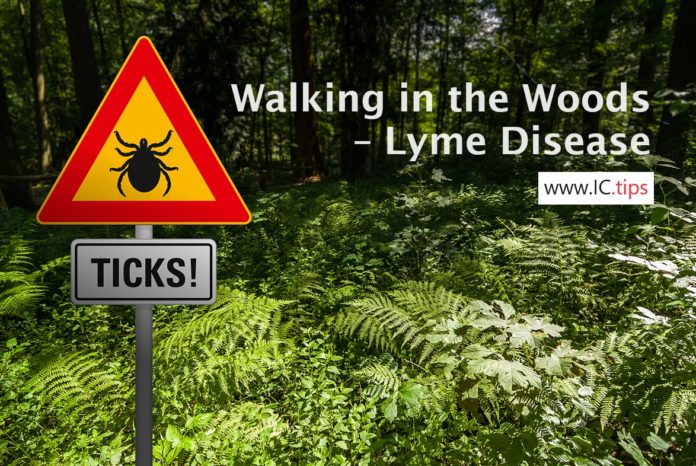I remember enjoying my walks in the woods in Manitoba, Canada, and never being too concerned about anything, maybe a turned-over tree, wet spots, or some bugs, but nothing serious. Lately, however, for the last 2 to 3 years, I had to add a new routine to my walks. Coming out of the woods, the number of ticks on my leg pants was getting larger and larger, and yes, that scary feeling when one of them was already crawling on my skin, looking for that warm spot to bite. Fortunately, I don’t remember the last time I had one bite me, but the joy is slowly taken out of the woods (walking). While the ticks alone can be a real nuisance, the disease some of them carry and are now spreading more and more is concerning. I am talking about Lyme disease, a bacterial infection caused by a spirochete with the scientific name Borrelia burgdorferi (CDC, 2022). These spirochetes have that name because of the unique way they look and move and, like a corkscrew, enter your cells (FAR, 2016).
not all ticks carry
that pathogen
Now, not all ticks carry that pathogen, and while it might sound comforting that only the black-legged tick (Ixodes scapularis) carries Lyme disease, I am not in the habit of scientifically trying to figure out which tick is crawling on me. While we have the black-legged one, we call it the deer tick; there are also the American and the brown dog tick, and the Rocky Mountain wood tick. Deer ticks are abundant in North America, and Lyme disease does not stop at the borders. It is found all over the world. As a side point, ticks are also carriers for other diseases and the Minnesota Dept. of Health has an interesting “shopping list” of all the bugs they can carry (Minnesota Dept. of Health, 2022).
Coming back to Lyme disease, it seems to have doubled over the last 30 years, and that only involves the cases that have been recognized, which in part is also increasing the numbers (The Guardian, 2023). In Canada, the number of reported human Lyme disease increased from 144 in 2009 to over 3000 in 2021 (GoC, 2021).
In any case, one of the key factors is the increase in the tick population and the increase of the Lyme bacteria host, which are certain rodents and birds. The cause? You might have guessed it. They are the obvious culprits: warmer weather (climate change) and changing human behaviour. While I will not go into the details of the tick life cycles, the very young ticks are the ones that get infected and carry the bacteria throughout their development stages and infect humans at the end. There is a lot of information available online about the disease and its symptoms, and I certainly encourage you to look it up before you enjoy the great outdoors.
preventive measures
Here are a few preventive measures you can take, even if you only walk the dog in a more rural area:
-
- Insect repellent is a good idea, and even if you don’t like DEET, there are DEET-free alternatives tested for ticks (read the label).
- Watch your clothing and cover exposed skin on your arms and legs, especially if you walk through tall grass and brushwork.
- Do your tick check after your walk, and if available, have someone else check your back. If you had a good walking workout, take a shower, it will wash off non-attached insects.
- Watch your dog or other pet. Ours was always a tick magnet and not only did he get bitten, he also brought them into the house and they were found crawling around inside.
References
Centers for Disease Control and Prevention (CDC), (2022, January 19). Lyme Disease. https://www.cdc.gov/lyme/index.html
FAR Institute, (2016). Actions of Lyme Spirochetes (Borrelia Burgdorferi). https://www.youtube.com/channel/UCRVfnRWgaNqB38luEEwncpQ/videos
Minnesota Department of Health, (2022, December 23). Tickborne Diseases. https://www.health.state.mn.us/diseases/tickborne/index.html
The Guardian (2023, August 2). Tick tick boom: how much is Lyme disease increasing in the US? https://www.theguardian.com/news/datablog/2023/aug/02/lyme-disease-rate-us-ticks
Government of Canada, (2021). Lyme Disease: Surveillance: https://www.canada.ca/en/public-health/services/diseases/lyme-disease/surveillance-lyme-disease.html#a1












